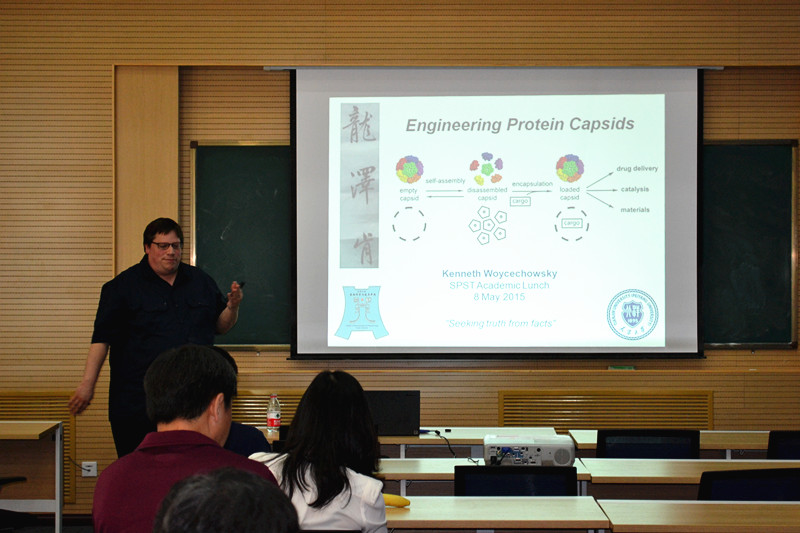Title: Engineering protein capsids for drug delivery
Speaker: Professor Kenneth J. Woycechowsky
Time: 12:30-14:00, May 8th, 2015
Venue: Meeting Room 408, Building 24

Brief introduction of speaker:
Professor Woycechowsky has been working in the field of the supramolecular chemistry of proteins. In particular, his main research activity has been focused on three main areas: 1) Capsid self-assembly. Investigate the relationship between amino acid sequence and quaternary structure. The knowledge gained from these studies is then applied to the engineering of capsid assembly switches; 2) Molecular encapsulation. Generate novel encapsulation systems for different types of cargo molecules including nucleic acids, enzymes, and small molecules. These efforts involve the design or evolution of attractive interactions between the cargo molecule and the capsid interior. Detailed characterization of these complexes reveal how confinement can be used to regulate the activity of cargo molecules. 3) Drug delivery. Control the self-assembly and encapsulation properties of protein capsids to build “smart materials” that can be used for the targeted delivery and release of pharmaceutical agents into cells. Such next-generation delivery systems will offer unprecedented specificity, environmental responsiveness, and chemical sophistication, enabling the development of more potent and powerful treatment regimes for myriad diseases.